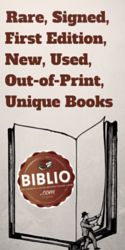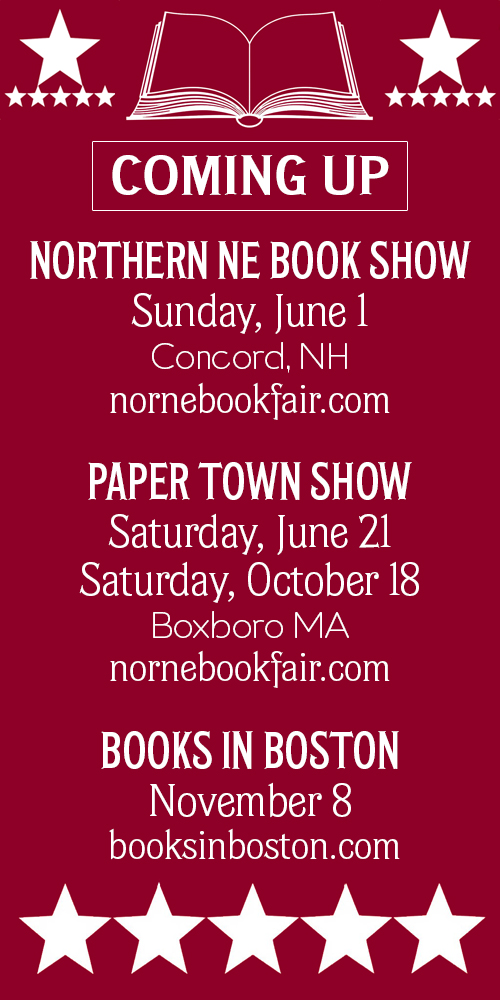Two Reviews and an Update
To say that my reading habits are desultory would be a kind way of saying somewhat disorganized. That might explain why, at the moment, there are several books in the triage pile next to where I do most of my reading. One, on the financial crisis, is entitled Bull by the Horns (NY, Free Press, 2012) by Sheila Bair, the former FDIC chairman. It covers much of the subject of Matt Taibbi’s “The Great American Bubble Machine” that originally appeared in Rolling Stone (some would argue that articles on banking scandals have no place in a magazine about rock and roll) and was later expanded into a book entitled Griftopia. Taibbi's style is that of a clever, smart-arsed popular journalist who pushes the boundaries of indelicate language in order to make his points, which he does pretty well. As an insider, Sheila Bair's book is more of a memoir, recounting her time spent heading up the FDIC from 2006 until June of 2011 – but being near the eye of the storm as she was during that period, her narrative takes on a large measure of authenticity. Commenting on the second Citi (Citigroup) bailout (after the initial TARP infusion), she can barely contain her sense of injustice bordering on outrage:
Even after receiving TARP capital of $25 billion, it was one of the most thinly capitalized big banks in the nation... (and) virtually no meaningful supervisory measures had been taken against the bank by either the OCC (Office of the Comptroller of the Currency) or the NY Fed. A smaller bank with those types of problems... would have been put on the troubled-bank list. Instead the OCC and the NY Fed stood by as... (Citi) continued to pay major dividends and pretended that it was healthy.
With the possible loss of generous bonuses at stake, CITI wanted even more of the public's money in the form of a second bailout (which they ultimately received) in return for which they would shake up top management. As Bair explains:
Citi's CEO, Vikram Pandit, was a former hedge fund manager. His selection as the CEO had been strongly supported by CITI's titular head, Robert Rubin, to replace Chuck Prince in late 2007. Prince... had served as CEO since 2003. He had done the right thing by resigning (albeit with a $38 million pay package)... The selection of Pandit simply reaffirmed that CITI was no longer a bread-and-butter commercial bank. It had been hijacked by an investment banking culture that made profits through high-stakes betting on the direction of the markets, in contrast to traditional banking, which focused on making loans to people based on their ability to repay...
In other words, the nation finds itself in dire straits and Harry the Horse and Nicely Nicely Johnson get money for nothing while George Bailey is hung out to dry. No wonder Time magazine called Sheila Bair “the little guy's protector in chief” which might explain why she had to go at the end of her five year term (2006-2011).
Another book that I haven't read yet but hope to soon, based on Nigel Lawson's review in the FT (November 17-18 weekend edition), is Oonagh McDonald's Fannie Mae & Freddie Mac: Turning the American Dream into a Nightmare (Bloomsbury, 2012). Oonagh McDonald is an academic who also served as a Labour MP, mostly as a front-bencher, for more than ten years. Her book focuses on the origins of the real estate based “financial products” that many of the investment banks (CITI for example) were betting on. Without going into detail about how mortgage-backed securities were created and sold on to unsuspecting investors, the systemic disaster, according to Lawson's reading of McDonald, had its origins in the “launch by Bill Clinton, in 1995, of a 'National Homeownership Strategy' designed to increase greatly mortgage lending to minorities and those on low incomes, with legislation to require lenders to lend to those with poor credit ratings or indeed without any credit rating at all...”
*
Half way through Robert K. Massie's Dreadnought, at more than 1000 pages one of his longer histories (Nicholas & Alexandra, Peter the Great, The Romanovs, etc.), I set the book aside because my copy of Richard Russo's Elsewhere (New York, Knopf, 2012) had finally arrived in the mail.
Russo left Gloversville, NY, an industrial town in the foothills of the southern Adirondacks, several years after I did (we attended the same schools, know some of the same people, places and things, but have never met). Even though we were raised on different sides of Kingsborough Avenue, it's obvious to me that each of us, in our own way, has been deeply affected by having grown up there. Gloversville is a city twice-damned – “first gradually and then suddenly” by the closure of most of the leather tanneries and glove factories and finally by the toxic legacy of the Cayadutta Creek that ran through part of town and a few feet behind my own father's place of business on Burr St, before eventually dumping its load of chemical dyes and tannery waste into the Mohawk River. It was along the banks of that creek, according to the police, where my father took his life in late September of 1958.
In recent years, the city has been damned yet again, judging by what the New York state medicaid formula has done to the real estate taxes of the middle class home-owners who can barely afford to remain. It's strange for me to recall that when I was growing up some people in Gloversville (mainly members of the Eccentric Club) looked upon those from nearby Saratoga Springs as poor cousins. However this is not a book for Gloversville train-spotters, although some people may mistakenly read it for that reason.
As the only child of a working class family, Russo lived with his mother in the second floor flat of a two-family home owned by his maternal grandparents. Although his father, a gambler, left home when he was very young, his grandparents, aunt, uncle and cousins lived nearby. Even though there was supportive extended family all around, his mother's nervous “condition” and self-defeating ways of interacting with others barely registered at first – later in life and during her final years in Camden, Maine, she would be diagnosed with a form of OCD, now thought to be a treatable condition.
After graduating from high school in 1967 he enrolls in the University of Arizona and his mother, on the strength of a supposed job waiting for her at GE in Phoenix, accompanies him on a cross country trek in a second-hand Ford Galaxie that had definitely seen better days – Russo describes it as having a “dull, battleship gray” finish; to me it sounded like a fresh coat of primer. Without the U-Haul in tow, the Gray Death is able to reach turnpike speeds in fifteen minutes or so, depending on wind direction – which becomes a real problem when trying to use the on ramps of the Interstate highway system.
Without going into much detail about his undergraduate days (except for brief asides, such as when he becomes a semi-addicted pinball wizard for a short time), his married life begins in Arizona, with an academic interlude in southern Illinois where he and Barbara start their own family, and ultimately takes them to a delightful village on the coast of Maine. After teaching for several few years he cuts his formal academic ties and devotes his time to writing and family. Throughout the 35 year odyssey his mother lives either with them or near them, except for what I would interpret as periods of self-induced unhappiness when she returns to a Gloversville that takes on a rosier glow whenever time and distance cloud reality.
Russo's mother was a compulsive reader and when she went “downtown” for shopping errands she'd allow her young son to spend time and what little extra money they had on books at Alvord & Smith's stationery store across from the high school (information gleaned from another source). For a long time Alvord & Smith did their best to carry a decent stock of books that was shelved along the left hand wall as you entered the store, as did Cowles & Brown on the right hand wall, a few blocks south. Whenever she moved (which was often as the years went on), the care and re-shelving of her books became top priority.
...illuminating though literary taste can be, the more I thought about it, neither my mother's library nor my own meant quite what I wanted it to. If my books were more serious and literary than hers, that was due more to nurture than nature. If I didn't read much escapist fiction, it was because I lived a blessed life from which I neither needed nor desired to escape... Maybe she'd tried to talk me out of becoming a writer, but she was more responsible than anyone for my being one...It was from my mother that I learned reading was not a duty but a reward, and from her that I intuited a vital truth: most people are trapped in a solitary existence, a life circumscribed by want and failures of imagination, limitations from which readers are exempt. You can't make a writer without first making a reader, and that's what my mother made me...
What more is there to say? A lot, as you will discover when you read the book.
*
In a few months Book Source Magazine will have completed 28 years of continuous publication and in reviewing the events of the past few years, it's about time for us to get serious and plan for the future. The nearby city of Syracuse once had a much larger population and was able to support two daily newspapers, both owned by the Newhouse group. Some years back – I think about 20 years ago more or less – the evening paper, the Herald-Journal, was melded into the surviving morning paper, the Post Standard, which itself continues to publish seven days a week. Continues, that is, until January 1, 2013 when Newhouse's decision to limit home delivery to only three days a week takes effect. A considerably smaller edition will be published the other four days but will be available only at selected newsstands in Onondaga County. It seems counter-intuitive, but Gloversville (see above) still manages to publish the Leader-Herald every day, including a Sunday edition.
There are all sorts of opinions about when it's time to go on to other things and many of us, whether we admit it or not, echo Scarlett O'Hara's “... I'll think about that tomorrow”. Sometimes we're overtaken by events and the decision is made for us – having had a couple of bumps in the road myself I'm aware of that looming reality. So does that mean I should be like Scarlett and “think about that tomorrow”? Or, should we make some adjustments, backtrack a bit, and explore the road not taken to find out where it might lead?
When we started this magazine back in 1985, I had no idea of what I was getting into, except to be able to act on a vague desire to do something to help the vast phalanx of nearly anonymous book-scouts and booksellers who comprised the lower levels of the antiquarian book trade. Nearly all of them subscribed to Antiquarian Bookman (later changed to AB Bookman's Weekly) a magazine that provided a way for entry-level booksellers to quote books to more experienced specialists while they themselves learned the basics of the rare book business. AB did a good job for a long time, but rising postal rates and the internet ultimately made their business model obsolete. At the outset we tried to help quoters cut postage costs by offering a free forwarding service (based on what had been done earlier by The Clique), but it didn't take long to understand that with the capabilities of the internet obvious to almost anyone, it was an idea long past its sell-by date.
One of our earliest display advertisers was Cathy Waters, a bookseller from Victoria (BC), who with her husband and a few colleagues formed Advanced Book Exchange (ABE), one of the first internet-based multiple listing services that was to radically change the way ordinary second-hand and out-of-print books were bought and sold. As one of the many consequences, the small army of book-searchers and quoters became even more anonymous, at least in print.
Another naïve idea from the 1980s that we entertained until recently, was that this magazine should offer all of our subscribing booksellers, not simply the more prominent ones, print exposure to readers and collectors through our free bookshop and specialty listings. The good news is that since our “new” subscription policy went into effect exactly three years ago, our mailing list has increased by more than 47%. The less than good news is that only about 1/3 are members of the A-List; the rest, the B-Listers (66.38%), receive this magazine free of charge . You can see this reflected in the constantly shrinking size of the Open Shop Guides, Specialists' Directories and Catalogues Received which, with the exception of Catalogues Received, will be discontinued after the May/June 2013 issue.
A new section, appearing in this issue for the first time is provisionally entitled “Exceptional Books and Manuscripts”. Selected from the stocks of booksellers who have been invited to submit entries, each and every issue will contain a joint catalogue of uncommon books and/or manuscripts. Its purpose is to serve as a catalyst of sorts, introducing serious collectors, especially those who are relatively new to the field, to booksellers with unusual material for sale.


























